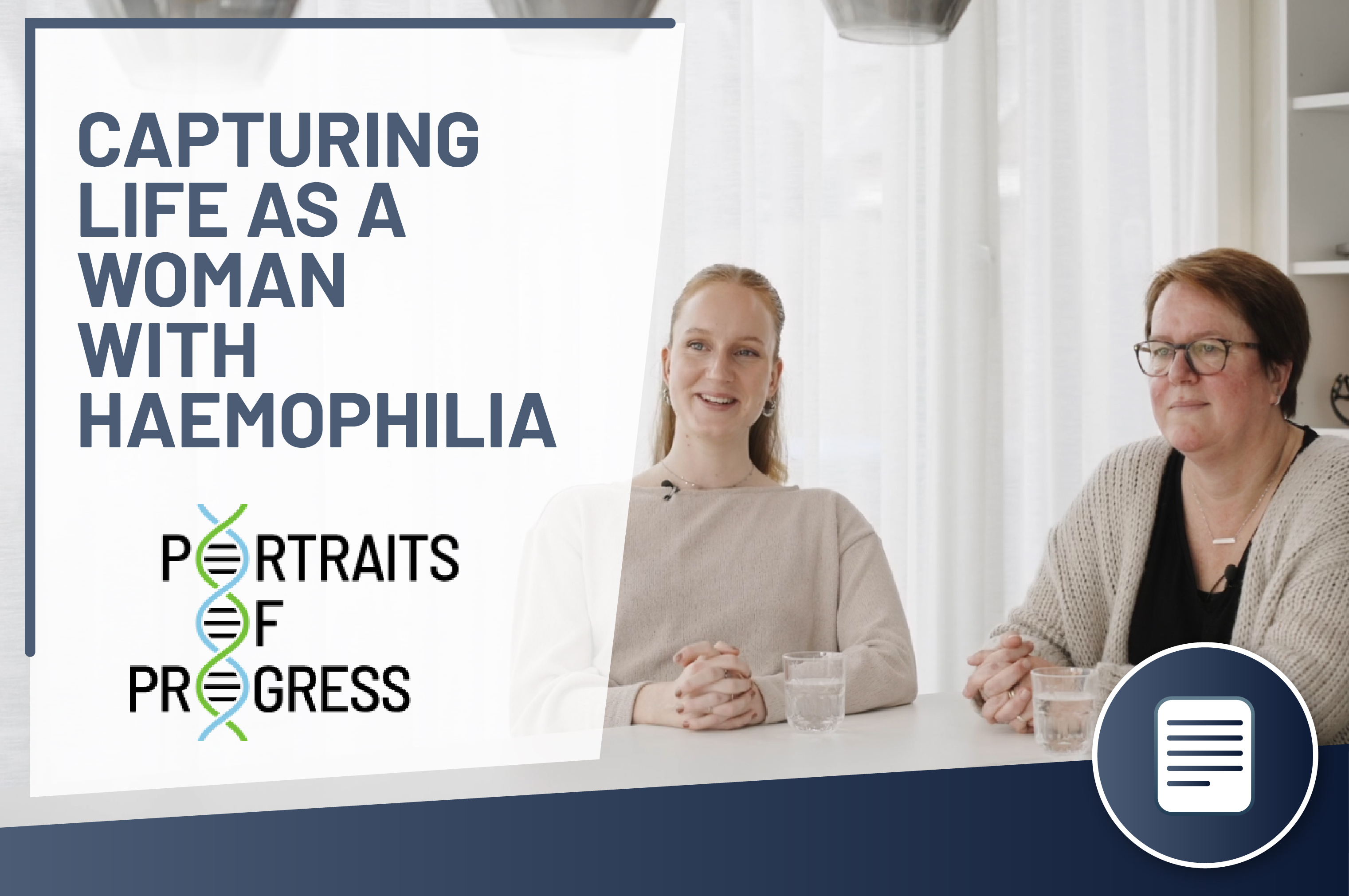Life for people with haemophilia has changed hugely over the last 70 years. In the 1950’s, few treatments for haemophilia existed and the average life expectancy was less than 20 years. Since then, life expectancy increased to 67 years in the 1990’s, and now in the 2020’s gene therapies have been approved.
To celebrate this, CSL Behring asked Rankin, a British photographer known for his photos of Queen Elizabeth and David Bowie, to capture the portraits of haemophilia patients. Through personal stories, archival images, and a timeline of key scientific discoveries, “Portraits of Progress” invites viewers to learn about life with haemophilia and the pace of progress – from the identification of haemophilia A and B in the 1940s to modern day investigations of potential gene therapies. Access the Portraits of Progress here.
As time moves on, so does our understanding of haemophilia and the way it affects patients and their families, and we want to shine the light on women, once thought to be carriers, who are now understood to be patients requiring equal access to care and treatments.
Through Portraits of Progress, we have captured the voices of women with haemophilia as they share their experiences of life as patients in their own right, rather than simply “carriers” of the disease; read Eke and Sterre’s story here.
To celebrate this, CSL Behring asked Rankin, a British photographer known for his photos of Queen Elizabeth and David Bowie, to capture the portraits of haemophilia patients. Through personal stories, archival images, and a timeline of key scientific discoveries, “Portraits of Progress” invites viewers to learn about life with haemophilia and the pace of progress – from the identification of haemophilia A and B in the 1940s to modern day investigations of potential gene therapies. Access the Portraits of Progress here.
As time moves on, so does our understanding of haemophilia and the way it affects patients and their families, and we want to shine the light on women, once thought to be carriers, who are now understood to be patients requiring equal access to care and treatments.
Through Portraits of Progress, we have captured the voices of women with haemophilia as they share their experiences of life as patients in their own right, rather than simply “carriers” of the disease; read Eke and Sterre’s story here.

